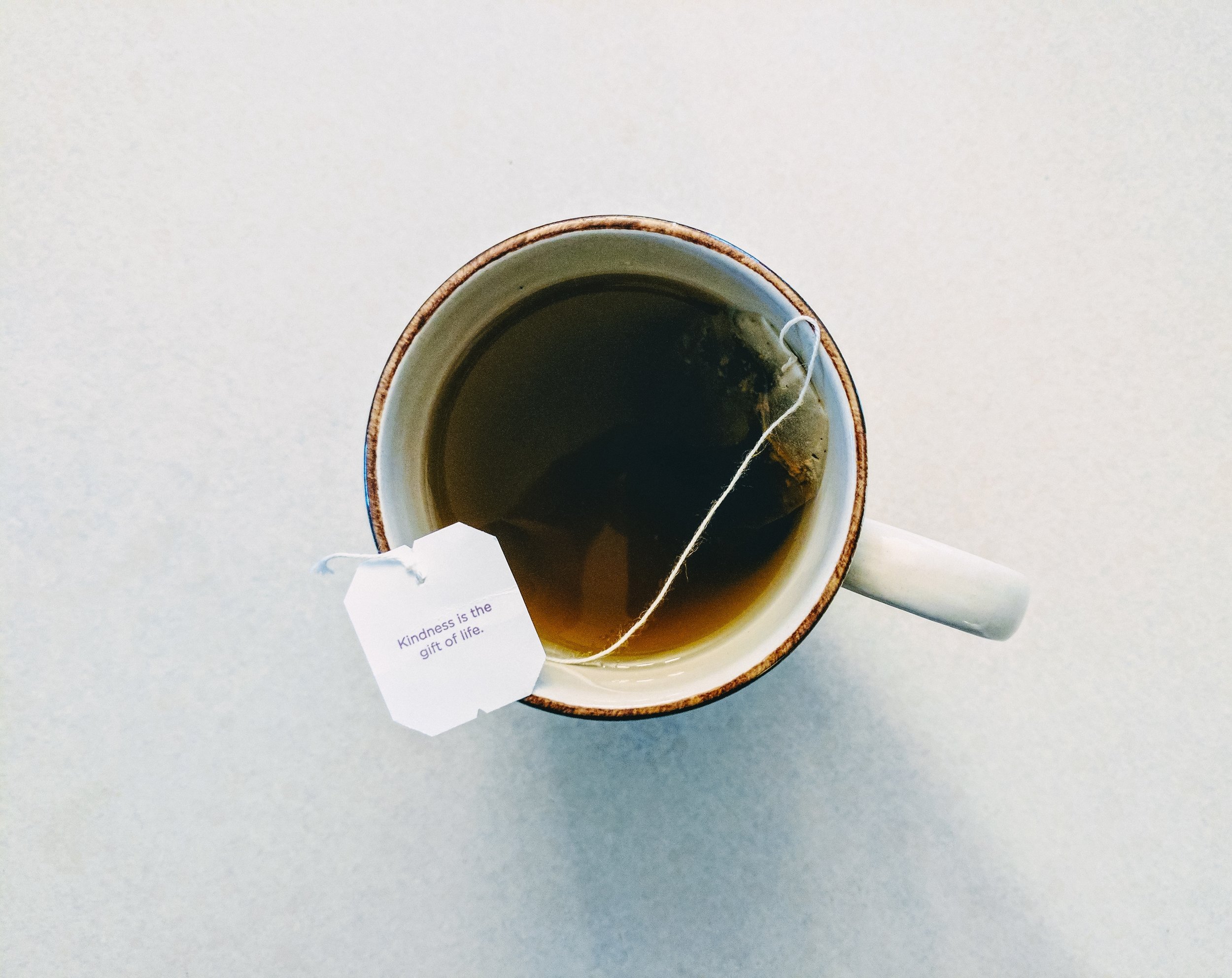Our Values Should Frame Our Health Decisions
We all have a set of core values. We use those values to inform the decisions that we make as we move throughout the world. There is an activity that I do with all my clients when we first meet. We sit down and they will write down as many of their core values that they can think of then they'll spend time contemplating how they're currently living them out, how it will look in the future and what's getting in the way of living out their values right now.
We all have a set of core values. We use those values to inform the decisions that we make as we move throughout the world. An activity to try is to write down as many of your core values as you can think of, then spend time contemplating how you're currently living them out, how that will look in the future and what's getting in the way of living out those values right now.
This gives you a foundation to work from. When we identify what we hold most important in our lives, we know what to focus our time and energy on. So often our core values do not align with the concepts of dieting and pursuing weight loss. If we value time spent with loved ones and serving others, it doesn't make sense to also be engaging in diet culture. The lifestyle needed to manage our weight and food intake can be incredibly isolating. It would be difficult to maintain strong relationships with friends if we're always worried about our food choices. When we're doing something that goes against our values, we usually feel a sense of discomfort. We just have to be willing to be honest with ourselves about it.
Your values might be different than mine, or someone else, but that's okay! It's important that we take the time to think about what our own biggest priorities are. If you're ready to start thinking about how to align your values with your health, try answering some of the questions below:
Questions for reflection:
What are your core values?
Where do you see yourself in 10 years?
How will you think about and treat your body?
What food will you eat?
How will you move your body?
Think about your answers to these questions and decide what steps you can take to start aligning your core values with your health decisions and what might be getting in the way of living out your values. It may be helpful to work with a dietitian to help you dive deeper into these topics. Please reach out if you have any questions!
Intuitive Meal Planning
One question that I get a lot from clients is whether or not it's okay to meal plan if you're trying to eat intuitively. The short answer would be, yes it's okay to meal plan! But we want to be doing so in a flexible way, that allows for change and variety. I think that for most people there's a big fear that if we introduce any form of structure into our eating, we'll automatically fall back into restriction or diet-y behaviors. If you're coming from a background of these behaviors, it's a valid concern. It's important to be working through restrictive mindsets and the desire for control so that we can come to a place of neutrality with food decisions. If you're someone who has used meal planning as a way to restrict in the past, you may want to double check your intentions before getting started again.
However, if you're in a good place in your relationship with food, meal planning can be a super helpful tool! It can encourage wise spending of your money and help you get organized as prepare for your week. I know many people have families and small children to feed, daily commitments to consider and tight budgets. Loosely planning out some meals for the week can help us keep all of those priorities in mind without becoming too rigid.
I'm sharing some tips below that have worked for me in the past. You may find that some of them work for you and others don't. That's totally okay! You can always try some out, see how they feel and keep what works best for you. Give yourself grace and room to figure out what the best options are for your own needs.
General Tips:
Consider only planning 4 dinner meals per week. AKA you go to the grocery store with a plan to buy ingredients for 4 (ish) planned dinner meals that you want to incorporate throughout your week. This leaves room for other meals and nights out with friends. You have the opportunity to try something new with these dinner meals or stick with old favorites! (You don't always have to have something new and "Pinterest worthy"-your favorite lasagna or mac and cheese recipe is just fine!).
Plan to make extras for leftovers. Consider doubling or tripling the recipe you're working with so you can have some extra to use for lunches or dinner the next day. This can make lunches and dinner decisions much simpler.
Try rotating breakfast and lunches. Try to incorporate variety into your meals by working on rotating options for breakfast and lunch. You could try oatmeal for breakfast, other days cereal or eggs and toast. Then do the same with lunches. Some days I'll have leftovers, other days I'll bring some kind of sandwich or salad with lots of sides.
Allow the days and meal choices to change. Sometimes things come up during the week. Building in flexibility is key. Some days you may not feel like cooking. Some weeknights it might sound more enjoyable to spend your time outdoors than making a whole meal. When that happens, just adjust and save one of your other planned dinner meals for another night.
Make a grocery list, but leave room for changes and fun foods. Making a list is helpful so you don't forget what you need (and can avoid making 100 trips to the store each week). Typically, I try to figure out what I definitely need and leave room for changes once I get to the store. I like to make sure I'm also planning some fun foods like ice cream or cookie dough or other desserts.
Compile some lists of favorite and go-to meals. Compile the meals and recipes that you really enjoy all in one place. If you make something that turns out really well, put it into a file on your computer or pin it to a Pinterest board so you can come back to it. Keeping your favorites handy can help you avoid falling into a black hole searching for recipes and over-thinking your options.
Have some staples and convenience foods on hand at home. Continually restock your pantry and freezer with items you can use to quickly whip something together when you don't feel like cooking, or it feels too overwhelming. Keep frozen pizzas, veggie mixes, frozen burritos, waffles, potatoes, bread, etc. on hand for easy meals or snacks.
Printable Planner:
I'm also sharing a downloadable meal planning guide. It's intentionally very simple so that you can make it your own! It's meant to be an outline, so don't feel like you need to fill in each and every day, just use what you need and what's most helpful for you.
Download
The Power of Self Compassion
Self Compassion
Self-compassion is the act of showing warmth, caring and kindness to yourself, without judgement. This is essentially the same as having compassion for others. We can identify when someone is struggling and respond gently, out of a place of empathy and caring. But I think when it comes to ourselves, too many of us have a never ending stream of negative self-talk running through our minds each day. It's easy to beat ourselves up over perceived shortcomings and failures. But is that how we would respond to a friend in need? Probably not.
If we choose to relate to ourselves like we would a friend, we can learn to love and appreciate ourselves for our strengths rather than criticizing our weaknesses. When we choose to show ourselves compassion, we're more likely to rebound and recover from negative situations and feelings. Whether we're having a negative body image day or feeling bad about food choices, self compassion allows us to recognize the situation and feelings with curiosity and kindness rather than harsh criticism.
Part of learning how to show yourself compassion is recognizing that we're all human and we all have struggles. Unfortunately it's part of life, but we're not alone in suffering or experiencing difficulties. Understanding this can help us better relate to ourselves when negative feelings crop up. Cultivating more compassion for ourselves allows us to stop holding on to perfectionism and fearing failure. Physiologically, it can even decreases cortisol levels, anxiety and depression.
Showing ourselves compassion doesn't mean that we'll never have negative feelings again.
It simply give us the power to recognize the feelings, and choose how to respond. Addressing it from a place of gentle understanding gives us that freedom.
If you've never considered this idea before, it may take some practice to feel comfortable. A good place to begin can be to simply recognize your inner self-talk. What does it sound like? Does it change throughout the day? Is it kind, or critical? Once we recognize how we talk to ourselves we can work on adjusting the narrative. Learning to cultivate more self compassion is a process but with practice it gets easier.
Health at Every Size: An Overview
Health at Every Size
In short-Health at Every Size is an approach that evaluates a person's health, based on behaviors and lifestyle factors rather than weight. That's not to say everyone at any weight is automatically healthy. We are simply taking the focus off of weight to assess people from a truly holistic perspective.
We know that for the vast majority of people, long term, sustained weight loss is not possible. Yet, we're all still encouraged to diet and lose weight, at any cost. A fundamental aspect of HAES is that we all stop the pursuit of weight loss. Some may hear that and wonder: "if we're not trying to lose weight, how do we prevent chronic diseases?" Well, the research shows us that changing health behaviors (like movement, sleep, and stress management) can improve physiological outcomes (like blood pressure, cholesterol levels, etc) even without weight loss. So its's possible to improve our risk factors for disease, without sacrificing our health in the process.
The basic components of Health at Every Size are respect, critical awareness and compassionate self care. Each is an encouragement to reject our culture's widely held assumptions about weight and forge a new path.
Respect
Celebrate the differences in our bodies; all shapes and sizes. Acknowledge your own weight bias and discrimination and begin working through that. Know that all bodies are good bodies and we are not able to tell how healthy or unhealthy someone is simply by looking at them. A smaller body size does not equate to better health.
Critical Awareness
To fully embrace HAES, we need to challenge many common cultural beliefs. This includes scientific assumptions about the role that weight plays in health. The research only shows a correlation, not a causation of weight's role in chronic issues. We should seek to support health policies that provide fair accurate information, as well as necessary services for all people regardless of physical, economic or social status.
Compassionate Self-Care
We can cultivate better self-care in several ways. We can find the joy in moving our bodies, eating intuitively, appropriately managing stress and improving sleep habits. When we begin taking care of our body in these ways, it will have the opportunity to settle into it's natural set point range. Your personal set point weight may be above or below where it currently is but once our body reaches that cozy range, we won't have to fight to stay there. This is a good thing. We can learn to truly take care of ourselves, and support our health, rather than striving for a smaller body.
If you're interested in learning more about Health at Every Size and applying it to your own life, schedule a free discovery call with me to start diving in.

















